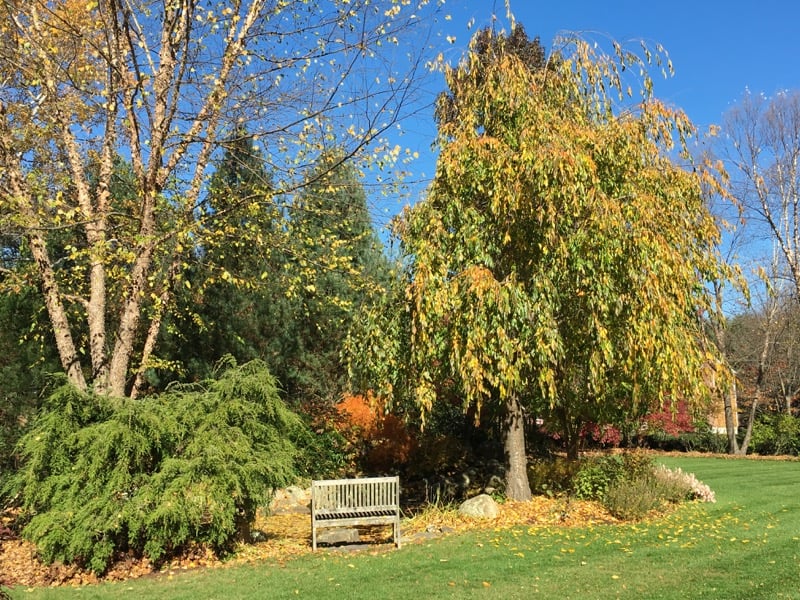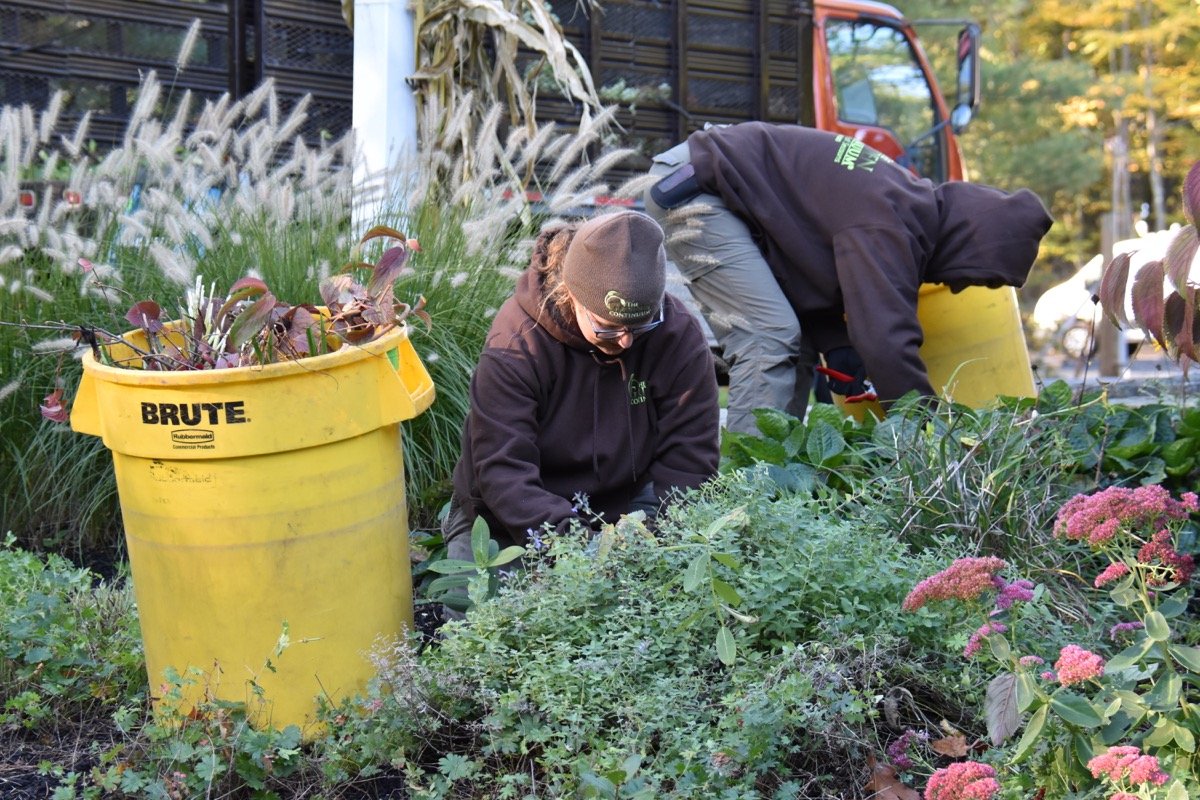Many homeowners don’t realize that fall is a critical time for lawns and gardens. Even though the summer bloom is off, bright colors are beginning to fade, and winter is just around the corner, fall is actually an important time to get your property ready for the next growing season.
Here are five helpful fall tasks that will save you time and money by tackling the right tasks at the right time using the right techniques:
1. Dividing
Your perennials have just spent the spring and summer growing and spreading out. It’s time to determine what perennials may have become too big and are ready for dividing and replanting to take advantage of all that growth. There’s no better money-saving tip than shopping in your own backyard to get new plants for new areas. Hostas, Daylilies, Irises, Black-Eyed-Susans, and Shasta Daisies are just a few common perennials known for getting too big in the garden. Dig them up, chop them in half, put one half back where it came from and plant the remaining half in a new location to start a new garden.
2. Transplanting
Sometimes certain areas of your garden or shrub beds can do so well they begin to feel a little overcrowded. Fall is a great time to move small-to-mid-sized shrubs from cramped quarters to more spacious territory. Rhododendrons, Azaleas, Boxwood and Spirea are all shrubs that move easily when you dig them as temperatures start to cool and the rains return. It can be surprising how many plants you might “find” in an overcrowded bed or garden. All of a sudden, you’ll have half a dozen “new” plants that had been hidden from sight that can be used to create an entirely new landscaped area. Remember, transplants and divisions are like new plants; they'll need extra watering.
3. Spring Clean-up in the Fall
Tackle your fall landscape like you are doing a spring clean-up. We call this getting "mulch-ready" in the fall. If you take the time now to schedule a few weekends to rake leaves, cut down perennials, and edge your beds you’ll have an easier time getting ready for spring. You can now get your mulch down earlier in the spring for better control over weeds as the growing season ramps up.
4. Weeding
By fall, many people feel like they can stop weeding. They leave the late summer weeds in the beds and forget about them. This is a surefire way to ensure that next year there will be even more weeds. In the fall, weeds go to seed and those seeds get spread by birds and the wind. Then they lie dormant over the winter, waiting quietly for spring. Come springtime, Ta-da! A whole new crop of weeds. If you take the time to thoroughly weed in the fall – removing roots and all -- you'll have a better chance of getting mulch down early and having less weeding to do next season.
The best way to manage weeds in your lawn is to have a dense lawn. Crabgrass is an annual -- it grows all year, flowers, sets seeds, and then dies. The following year, those seeds readily germinate in the gaps in your lawn. All those patchy brown spots with no grass become crabgrass patches in no time. If you can get turf grass growing in those spots instead, it makes it harder for crabgrass to take hold, so you need less herbicide – it’s cheaper and healthier! That leads us to our fall money saving tip number five.
 Fall garden cleaning makes for an easier work load in the spring.
Fall garden cleaning makes for an easier work load in the spring.
5. Seeding
Think spring is the best time to seed your lawn? Think again. Spring is actually a poor time to try to generate new grass. The ground is cold and plants are just coming out of winter dormancy and slow to respond to fertilizing.
FALL is actually the best season for seeding and reseeding. Why? Because the soil is all warmed-up and responsive and the rains generally return – both key elements for promoting new root growth. Start by giving your lawn a hard raking to dethatch it after a season of building up dead grass clippings from mowing. Apply a light mixture of rich soil and fertilizer and rake in some fresh grass seed; ensuring there is very good seed to soil contact. Then water it in and keep watering it to ensure germination and growth – hopefully Mother Nature will help out with autumn rains.
To save even more money, consider blending some Dutch White Clover into your lawn. Contrary to popular belief, clover is NOT a weed. In fact, at one time clover was prized as lawn cover and considered a sign of prosperity. Clover’s a perennial ground cover that is perfectly symbiotic with turf grasses. It’s also a workhorse. As a Legume, it pulls atmospheric nitrogen from the air, passes it through its tissues, and then exudes a nitrogen byproduct into the soil that is actually readily available to the turf grass for food. How about that? You can feed your lawn over and over again for free just by adding clover to your lawn once!
To learn even more helpful money-saving lawn care and gardening tips, check out our video segment on NECN’s Money-Saving Mondays here.
TWEETABLE TIP: Fall is actually an important time to get your property ready for the next growing season. http://ctt.ec/Vizcp+




 Fall garden cleaning makes for an easier work load in the spring.
Fall garden cleaning makes for an easier work load in the spring.
Leave a comment